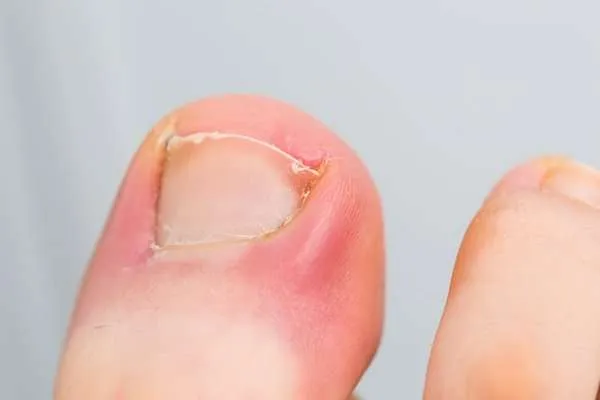
An ingrown toenail occurs when the side or corner of a toenail grows into the soft flesh of the toe, most commonly on the big toe. The result is often pain, redness, swelling, and sometimes infection in the surrounding skin. While minor ingrown toenails may be managed at home, it is fundamental to know when to seek professional podiatric care. Here’s more information on ingrown nails and how to treat them at home:
What Causes an Ingrown Toenail?
Several factors can contribute to the development of ingrown toenails. One of the most frequent causes is improper nail trimming, like cutting toenails too short or rounding the edges. Improper nail trimming encourages the skin to fold over the nail, causing the nail to grow into the skin. Toenails should be cut straight across to help avoid growth issues.
Other Causes
Trauma to the toe, like stubbing it or dropping a heavy object on it, can lead to an ingrown toenail. Footwear that is too tight or narrow may also be a developing factor. Shoes that crowd the toes place consistent pressure on toenails, which may force them to grow into the surrounding tissue.
Health Factors
Some individuals are more susceptible to developing ingrown nails due to genetic factors, like those who have inherited curved toenails. Some other people at risk of ingrown nail development include those with:
- Circulation Issues
- Nail Infections
- Diabetes
- Nerve Damage
By understanding these causes, you can help prevent this condition from occurring or recurring.
What Are Some At-home Treatments?
For minor ingrown toenails that are not showing signs of significant infection, certain at-home treatments may provide relief and help the nail grow out properly. These methods are intended to soften the skin and reduce discomfort. Soaking the affected foot in warm, soapy water for 15 to 20 minutes twice a day, may help reduce swelling and relieve tenderness. This process softens the skin around the toenail, which can ease the pressure.
After soaking, it is imperative to dry your foot thoroughly to prevent bacterial growth. Once fully dry, you can gently attempt to lift the corner of the ingrown nail. A small piece of cotton or dental floss can be carefully placed under the edge to help the nail grow above the skin edge. This should be done with caution to avoid causing further injury.
When Should You Visit a Podiatrist?
While home care can be effective for mild cases, certain symptoms indicate that it is time to seek professional medical care from a podiatrist. If you have a condition, especially one relating to poor circulation, you should see a podiatrist at the first sign of an ingrown toenail.
A podiatrist can properly diagnose the severity of the condition and offer appropriate treatment. Some podiatric treatments may include lifting the nail, partially removing the nail, or, in some cases, removing the nail and associated tissue. Consult with a professional if you experience any of the following:
- Severe Pain or Discomfort That Does Not Improve With Home Care
- Redness that Spreads From the Toe Into the Foot
- Pus or Drainage From the Area Around the Nail
- A Foul Odor Coming From the Toe
- Fever or Feeling Unwell in Conjunction With Toe Symptoms
Learn More About Ingrown Toenails
If you are experiencing persistent or severe symptoms, consulting with a healthcare professional is the safest course of action. They can provide a definitive diagnosis and a treatment plan tailored to your specific needs. Learn more about ingrown toenails today.



